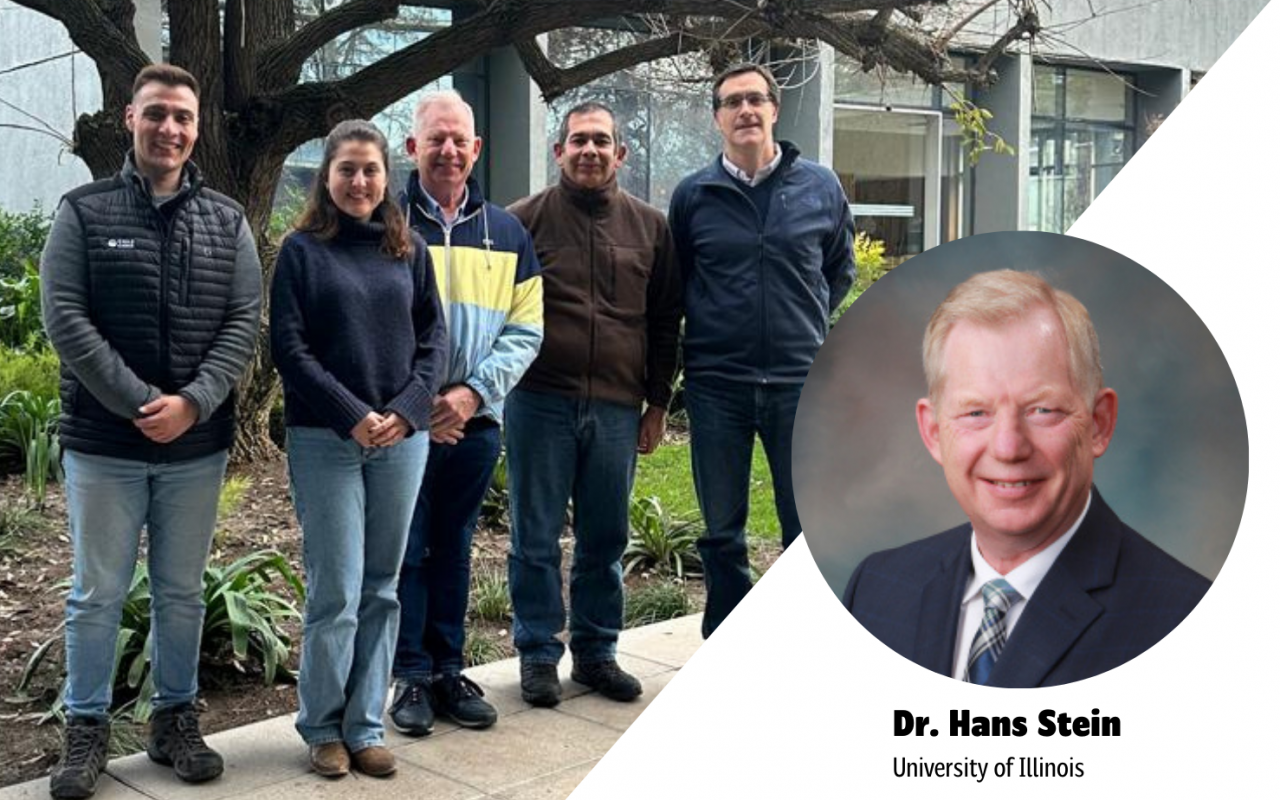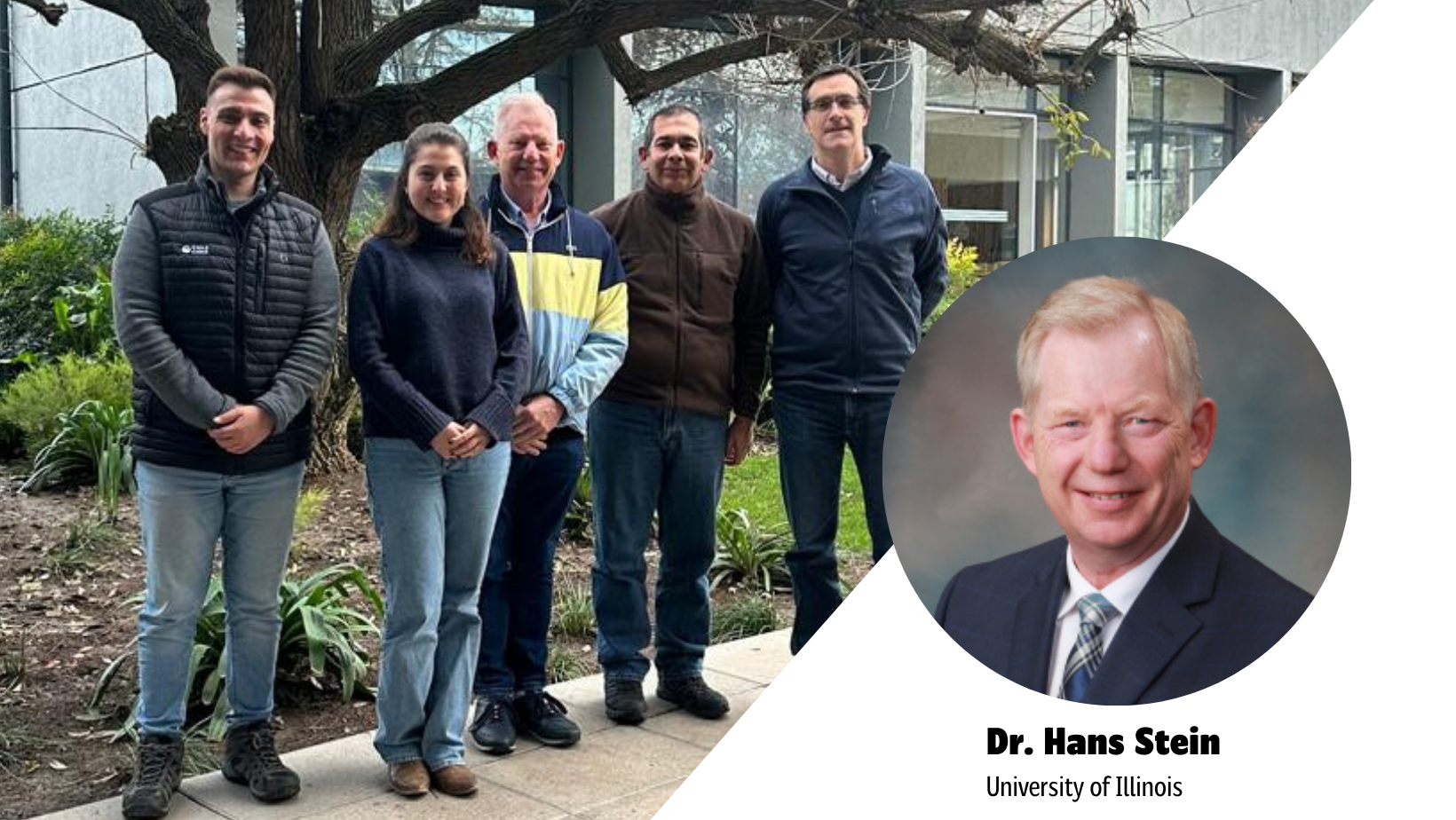
Interview with Dr. Hans H. Stein, international authority on monogastric animal nutrition: “If you ask me which South American country is at the forefront with technology, I would say Chile”
Renowned animal science professor at the University of Illinois since 2011, Dr. Hans H. Stein, visited Chile for the Swine and Poultry Nutrition Seminar organized by ChileCarne and sponsored by DSM-Firmenich (a global leader in animal nutrition and health). This seminar took place in late June at Universidad de Chile’s School of Veterinary and Livestock […]

Renowned animal science professor at the University of Illinois since 2011, Dr. Hans H. Stein, visited Chile for the Swine and Poultry Nutrition Seminar organized by ChileCarne and sponsored by DSM-Firmenich (a global leader in animal nutrition and health). This seminar took place in late June at Universidad de Chile’s School of Veterinary and Livestock Sciences to discuss new knowledge and innovative strategies related to nutrition and diet preparation for monogastric species, such as pigs and poultry, that improves intestinal health, animal welfare, and yield.
Dr. Stein is internationally renowned in monogastric animal nutrition. His work and research focus on intestinal physiology and the assessment of new feed ingredients and nutrients. He is recognized for establishing pigs’ specific nutritional requirements of digestible calcium and phosphorus. In an exclusive interview with ChileCarne, he shared his view about these issues in Latin America and recommendations for local production and exporting companies on how to obtain and provide pigs with the best feed. He explained, “we talked about phytase and the advantages of using it six weeks after weaning the piglets, and I think that’s new here. There aren’t many companies using this beneficial technology, which is readily available.”
Do you think progress on these issues is possible in South America, and Chile in particular?
Pig and chicken farming will continue to grow throughout South America because its population is increasingly growing their purchasing power and eating more of these products. On the other hand, Denmark produces more pigs than nine Spanish-speaking countries combined; and that, added to the local technology level, are indicators of the many existing opportunities to increase output. Additionally, China and other Asian countries have a demand for more pigs.
How has nutrition advanced in South America compared to Europe and the United States?
“Genetics have the same data in South America, Europe, the United States, and Asia, but my perception is that South American nutritionists are a little slower in implementing the new technologies and knowledge that we adopt in the US. For example, at the seminar in Chile I spoke about the digestibility of calcium and phosphorus, and I believe that very few countries in the region are currently using that information, although it is available all around the world. The technology and documentation are there, with the arguments about why it should change. In the US, companies change faster because they are focused on reducing costs; if it’s possible to produce at 50 cents per ton, they promote the necessary changes to make it happen.
Chile is different from other South American countries because companies produce and process most of their own pigs, so they should make decisions faster when opportunities arise. If you ask me which South American country is at the forefront, I would say Chile. The companies we visited have a high level of technology and knowledge. Although, it seems to me that there is a tendency in South America, that when a team from the US or another country comes and offers nutritionists a product with strong claims, they might buy it without asking if it will really help them or without seeing any studies that support those claims. They also use lots of additives without researching if it’s actually necessary. I didn’t see this in Chile, perhaps because production is integrated, so companies can measure if there will be a real advantage in using a certain additive. Just like the US and Spain, companies in Chile are integrated and at the same level, which is a great advantage in South America. That’s one of the reasons why Chile’s industry seems more advanced. However, in nutrition there is always room to improve, to implement new technologies.
During your presentation at the seminar, you stated that calcium and phosphorus are linked to yield; for example, that reducing particle size or extrusion can increase energy digestibility. What’s your recommendation for companies to move forward on these issues?
I don’t know what particle size is used here but 400 and 500 microns would be the best. I think most companies still use pellets and that’s why they have that technology, and it works. Another technology has to do with enzymes. Many companies use them and that’s another advantage. We talked about phytase and its advantages six weeks after weaning, and I think that’s new here. There aren’t many companies using this beneficial technology, which is readily available. With calcium, the key is measuring its level and understanding that too much is bad; and also, that if they use phytase, they need to further reduce calcium in full diets. This is something that all companies can do rather quickly, without much complication. It’s not so common but easy to do: if calcium is too high, they need to lower it and understand the benefits of that. By lowering calcium, pigs’ intake increases and they gain more weight, so companies could reduce their spending on this nutrient. In the US, there are also companies with integration that have implemented these. The same in Spain and France; in the rest of Europe producers are smaller and there is no similar integration.
What are some advances related to pig nutrition? What should producers take note of?
If possible, companies should buy competitive ingredients that are not so widely used, such as rye and wheat. Countries like Chile should buy or grow them. There is also talk about rapeseed, and if it’s more affordable than soymeal, it is also advisable to use it. I think companies should be looking for ingredients that help lower feed price, which is the highest production cost.
Secondly, implementing systems to assess well-known ingredients such as corn and soy to ensure their nutrient quality and contribution are what’s expected. For example, Europe imports lots of soymeal from Brazil. But sometimes they don’t have the capacity to sufficiently dry it, which means the end quality is poor because of fermentation. There are soybeans of differing quality, and Brazil has good quality, which is why it is important to always measure. As for the formulation, using amino acids, phosphorus, calcium, all stabilized digestibles. I think these are the key choices: having enough of all nutrients and being critical about additives. I’m not saying they shouldn’t be used because many do contribute, but some won’t help much. If there’s no scientific data about an additive, chances are it’s not worth using. Many countries in the Americas do not follow this; some suppliers persuade companies with claims and presentations, but no scientific data. Companies should ask the vendor to come back when they do have the data or rely on universities to do research on diets and ingredients. It’s good when companies produce their own data, but it’s even better when the data comes from a proven independent institution. Like phytase, we know it works, at least when coming from large companies. Nutritionists should also demand scientific data as part of their work.
What is the university-private sector collaboration being fostered right now?
We’re currently working with several universities: two from Europe, and one each from Denmark, Spain, Canada, Colombia, the Philippines, and New Zealand. Universities have different areas of focus and expertise, which is why it is good to work with them. We’ve realized that in order to make progress in these issues, universities do not need large investments or overly expensive equipment. It has more to do with whether there is interest, small spaces to advance research, and a small lab. That’s all you need. I was recently in Bogotá, and they were working with the exact same equipment we do in the US. Sometimes researchers in Latin America don’t believe they can do it; they don’t think it’s possible. It is the opposite in the US: we see if it’s possible and then we go through with it. It has to do with tradition, with the way of doing things. They have to say: let’s try this because we aren’t afraid. In South America they might think this type of research is doable but also too difficult to carry out.
When I started, many years ago, I called numerous companies and said: I have this idea, I think it’s very good, I need money. Some said no, but most said yes. That’s how universities obtain financing. I think professors in South America don’t have strategies to ask companies to fund their research. The knowledge and talent are there.
Some local companies buy ingredients, additives, and products like enzymes made in China. Do you recommend any additional safeguards with those products, thinking about their nutritional value and performance?
It’s the same issue that I mentioned before: often the Chinese don’t have scientific data or documentation. Let’s say their phytase, for example, is cheaper. It may be good or not, which is why it’s important to ask for the scientific data. Sometimes the Chinese themselves don’t want to use Chinese phytase because it doesn’t work. Some well-known companies with presence in China and elsewhere maintain the same level of quality; they are careful with that.
After your visit, what’s your take on Chile? Do you have any message for Chilean companies?
I think Chile is the most advanced South American country in pig production, but companies also face important challenges as they import most of their grains, and there aren’t many countries that are competitive in all grains. That’s a challenge for the local industry. On the other hand, I saw that Chile found a way to have products of superior quality and that’s why it’s successful in exports, thus compensating for the higher price of grains. That’s their secret, because they do have higher costs than Brazil or Canada, where grains are abundant. Another secret is that ChileCarne’s members work and export together under the ChilePork brand, not individually, and that gives them great power. I believe Chile’s exporting model has a higher influence from European countries than from the US.
